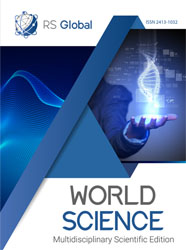ПРОИЗВОДСТВО ХЛЕБОБУЛОЧНЫХ ИЗДЕЛИЙ АНТИДИАБЕТИЧЕСКОГО ДЕЙСТВИЯ
Abstract
The article discusses the ways to solve the problems of low levels of active biological substances in the bakery product, with medicinal properties. In the process of the preparation of buns, the optimal dosages of the additives were calculated in order to determine an acceptable ratio of vegetable raw materials components and expand the range of bakery products with therapeutic and prophylactic effects. The article proposes new recipe for making buns with the addition of herbal additives such as stevia and licorice root. In addition, the study was conducted on the influence of licorice root and stevia additives on the rheological properties of the dough and the quality of the finished product. As a result, high-quality buns with the necessary consumer properties were obtained.
References
Матвеева Т.В. Физиологически функциональные пищевые ингредиенты для хлебобулочных и кондитерских изделий: монография / Т.В. Матвеева, С.Я. Корячкина.- Орел: ФГБОУ ВПО «Госуниверситет - УНПК», 2012.-947 с.
Вишневский В.И., Корячкина С.Я., Ладнова О.Л. Новые технологии в создании хлебобулочных изделий для больных сахарным диабетом: разработка и клиническое применение//Вестник новых медицинских технологий -2006 -Т. ХIII, No 1 - С. 164
Красина И.Б. Теоретическое и экспериментальное обоснование создания диабетических мучных кондитерских изделий с применением растительных биологически активных добавок: дисс. ...докт.техн. наук. – Краснодар, 2008. – 260 с.
Есаулко Н. А., Кривенко А. А., Войсковой А. И., Стародубцева Г. П., Жабина В. И., Донец И. А. Использование стевии для улучшения качества и удлинения сроков хранения хлебобулочных изделий // Вестник АПК Ставрополья. – 2011. - No4. - С. 7-10.
Views:
269
Downloads:
210
Copyright (c) 2020 The authors

This work is licensed under a Creative Commons Attribution 4.0 International License.
All articles are published in open-access and licensed under a Creative Commons Attribution 4.0 International License (CC BY 4.0). Hence, authors retain copyright to the content of the articles.
CC BY 4.0 License allows content to be copied, adapted, displayed, distributed, re-published or otherwise re-used for any purpose including for adaptation and commercial use provided the content is attributed.











